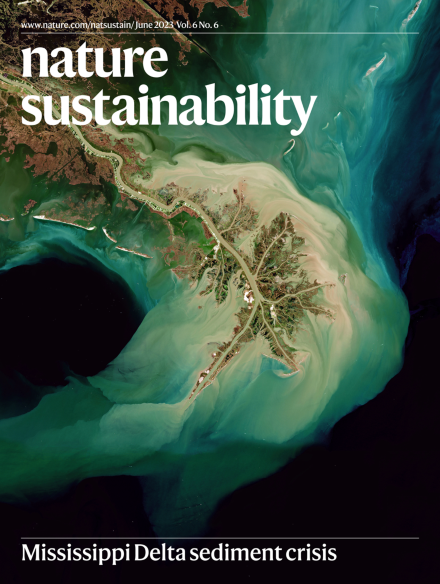在保护土地和水资源的同时,实现《EAT-Lancet》的“健康”饮食目标
IF 25.7
1区 环境科学与生态学
Q1 ENVIRONMENTAL SCIENCES
引用次数: 0
摘要
众所周知,健康饮食具有减少环境影响和使同样的农业资源能够养活更多人口的共同效益。EAT-Lancet(健康参考)饮食为人类健康和生态系统带来了复合益处。然而,目前尚不清楚在全球范围内,EAT-Lancet饮食法的要求在多大程度上可以持续得到满足。在这里,我们将空间分布的农业水文模型与线性优化分析相结合,以重新安置作物,在国家范围内最大限度地减少灌溉用水量,同时提高全球实现EAT-Lancet营养目标的水平。为此,我们根据与宗教有关的传统和现有畜牧业生产系统的具体国家饮食习惯定义了六种饮食情景,并保持了相同的农业贸易模式(进出口关系)。我们的研究结果表明,优化全球耕地分配和调整贸易流量,将使全球人口采用EAT-Lancet饮食,全球耕地面积减少37-40%,灌溉水消耗减少78%(±3%),不可持续的灌溉区减少22%。采用EAT-Lancet饮食法使全球粮食贸易在全球粮食生产中所占的份额(以千卡为单位)从25%(基线)增加到36%(±2%)。向可持续粮食系统过渡,促进全球健康饮食的采用,是一项紧迫的挑战。一项研究表明,如何通过减少土地和水资源限制的可持续农业战略来满足EAT-Lancet饮食要求。本文章由计算机程序翻译,如有差异,请以英文原文为准。

Meeting the EAT-Lancet ‘healthy’ diet target while protecting land and water resources
Healthy diets are known for their co-benefits of reducing environmental impacts and enabling the same agricultural resources to feed a larger human population. The EAT-Lancet (healthy reference) diet allows for compound benefits to human health and the ecosystem. It is unclear, however, to what extent the requirements of the EAT-Lancet diet may be sustainably met at the global scale. Here we combine a spatially distributed agro-hydrological model with a linear optimization analysis to relocate crops, minimizing, at the country scale, the irrigation-water consumption while improving the worldwide achievement of the EAT-Lancet nutritional goals. To that end, we define six dietary scenarios based on country-specific dietary habits from religion-related traditions, and existing livestock production systems, maintaining the same agricultural trade patterns (import–export relations). Our results suggest that an optimized global cropland allocation, and an adjustment in trade flows, would allow the global population to be fed with the EAT-Lancet diet, with a global reduction of the cultivated area of 37–40%, irrigation-water consumption of 78% (±3%), and unsustainably irrigated areas of 22%. The adoption of the EAT-Lancet diet increases the global food trade share of global food production, measured in kilocalories, from 25% (baseline) to 36% (±2%). The transition towards a sustainable food system that enhances the adoption of healthy diets globally is an urgent challenge. A study shows how the EAT-Lancet diet requirement could be met through sustainable agricultural strategies reducing land and water constraints.
求助全文
通过发布文献求助,成功后即可免费获取论文全文。
去求助
来源期刊

Nature Sustainability
Energy-Renewable Energy, Sustainability and the Environment
CiteScore
41.90
自引率
1.10%
发文量
159
期刊介绍:
Nature Sustainability aims to facilitate cross-disciplinary dialogues and bring together research fields that contribute to understanding how we organize our lives in a finite world and the impacts of our actions.
Nature Sustainability will not only publish fundamental research but also significant investigations into policies and solutions for ensuring human well-being now and in the future.Its ultimate goal is to address the greatest challenges of our time.
 求助内容:
求助内容: 应助结果提醒方式:
应助结果提醒方式:


